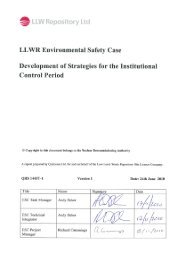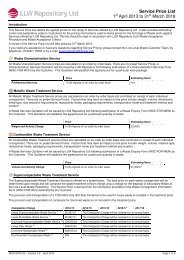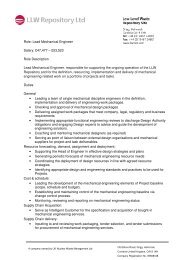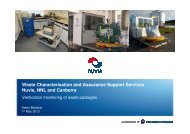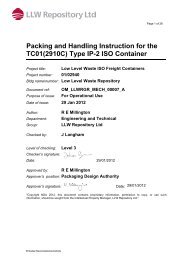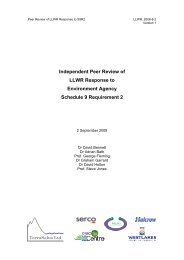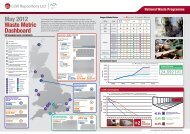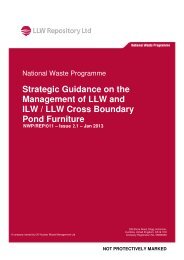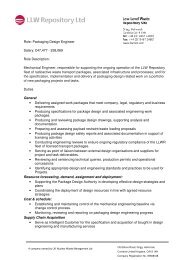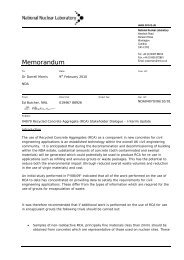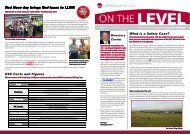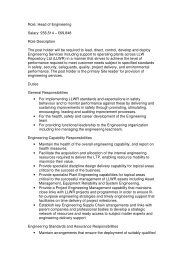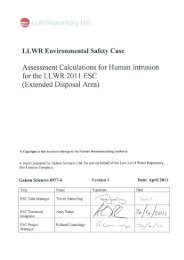Halcrow, Coastal Studies Forward Programme Data Compilation ...
Halcrow, Coastal Studies Forward Programme Data Compilation ...
Halcrow, Coastal Studies Forward Programme Data Compilation ...
Create successful ePaper yourself
Turn your PDF publications into a flip-book with our unique Google optimized e-Paper software.
4 Conceptual <strong>Coastal</strong> Change ProjectionModel4.1 Conceptual model developmentThe conceptual coastal change projection model (CCCPM) is presented in fourreports (<strong>Halcrow</strong> 2004c, 2005b, 2006b, and 2008) which document the variousstages of its development. These documents also describe the coastal developmentthrough the Holocene and the past response of the coast to changes in sedimentsupply and sea-level. The spatial/temporal framework is summarised below.Assessment tools used within the CCCPM, and current outputs of the model, aresummarised in Section 4.2.The most recent iteration of the conceptual coastal change projection model(<strong>Halcrow</strong>, 2008) was used by Nexia Solutions (acting as consultants to LLWR Ltd)to develop climate and landscape scenarios and coastal evolution pathways tosupport the LLWR’s Requirement 2 of Schedule 9 submission to the EnvironmentAgency (Thorne and Kane 2007). This document included mapped projections ofcoastal change interpreted from the work undertaken by <strong>Halcrow</strong>.4.1.1 Model frameworkIn developing the conceptual coastal change projection model, a geomorphologicalspace/time framework was adopted. The model incorporates the following:Space: geomorphological variation of the coast behaviour units (CBU)from St Bees Head to the Esk Estuary which have been specified in termsof their geomorphology, sedimentology and ‘inheritance’ (i.e. the impactsof glaciation, deglaciation and sea-level change in the Late Devensian toHolocene, see Sections 2.5 and 2.6).Process: provides functional models for the development of the coastlinebased on the impacts of inheritance from previous geological/climateconditions, and provides assessment tools to quantitatively model (e.g.empirical, mathematical, probabilistic) the evolution of open coast, barrierbeach and estuary CBUs.Forcing: considers climate change forcing scenarios. The 2002 DriggPCRSA Central Projection Scenario defines a number of variants ofpredicted climate change based on downscaling the LLN-2D modelresults. <strong>Halcrow</strong> (2004c) provides an update on the potential impact ofDoc No 1 Rev 2: Date: May 2010 30



